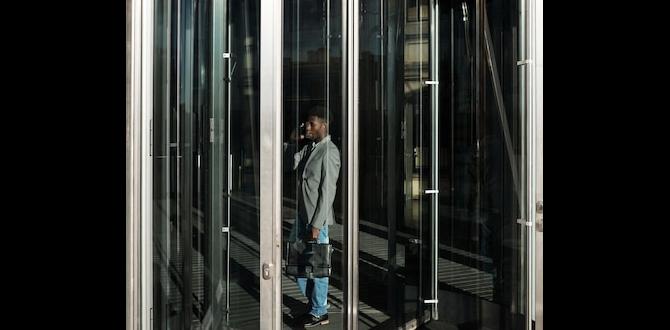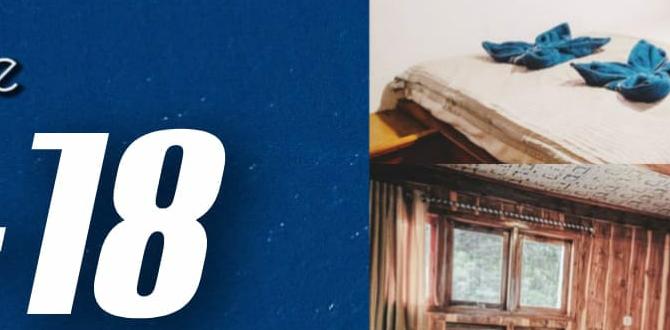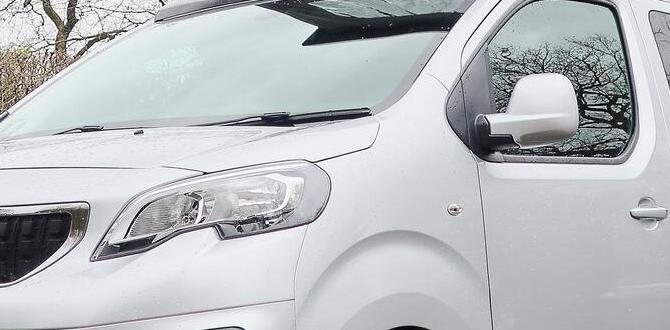Discover Austria’s unique neighborhoods with our essential guide for travelers seeking authentic experiences and hidden gems, ensuring a comfortable and memorable journey.
Austria is a country that truly captivates with its grand imperial history, breathtaking alpine scenery, and vibrant cultural tapestry. While Vienna, Salzburg, and Innsbruck might be the postcard stars, the real magic often lies in exploring the distinct character of each neighborhood. Feeling overwhelmed by where to start? You’re not alone! Many travelers dream of experiencing Austria beyond the typical tourist trails, but finding those truly local and essential spots can feel like a treasure hunt. Don’t worry, we’re here to guide you. This article will unlock the secrets to discovering Austria’s most charming neighborhoods, sharing insider tips and essential spots that will make your trip unforgettable and stress-free.
Navigating Vienna Beyond the Ringstrasse
Vienna, the dazzling capital, is famous for its opulent palaces and classical music. But step away from the Ringstrasse, and you’ll find neighborhoods brimming with local life, trendy boutiques, and fantastic eateries. These areas offer a more relaxed and authentic Viennese experience.
District 2: Leopoldstadt – A Vibrant Melting Pot
Leopoldstadt, also known as the second district, is an island between the Danube Canal and the main Danube River. Once a Jewish ghetto, it has transformed into one of Vienna’s most dynamic and diverse areas. It’s a hub for creativity, with many artists and young families choosing to call it home.
Why Visit Leopoldstadt?
- Prater Park: This iconic area offers both a sprawling green space for relaxation and the famous Wurstelprater amusement park with its Giant Ferris Wheel (Wiener Riesenrad).
- Karmelitermarkt: A charming, bustling market square with excellent food stalls and a cozy atmosphere, perfect for a casual lunch or picking up local produce.
- Danube Canal (Donaukanal): Lined with trendy bars, cafes, and street art, it’s the perfect spot for an evening stroll or a riverside drink.
- Culinary Delights: You’ll find everything from traditional Viennese Beisls (taverns) to international cuisine and innovative pop-up restaurants.
Essential Spots in Leopoldstadt:
- Mascot: For delicious brunches and specialty coffee. Their cozy ambiance is a local favorite.
- Nachbarin: A highly-rated, intimate restaurant offering seasonal, modern Austrian cuisine. Booking ahead is advised!
- Cycle Path Along the Danube Canal: Perfect for a leisurely bike ride, offering scenic views and access to many riverside establishments. You can rent bikes from many locations throughout the city. For international bike rental standards and tips, consider checking resources from The European Commission’s Transport Directorate.
District 7: Neubau – The Creative Heartbeat
Just west of the city center, Neubau (District 7) is Vienna’s bohemian and creative hub. Think independent boutiques, vintage stores, quirky cafes, and art galleries. It’s a fantastic place for leisurely exploration and discovering unique finds.
Why Visit Neubau?
- Shopping: This district is heaven for shoppers looking for non-mainstream fashion, handmade goods, and unique souvenirs.
- Café Culture: Neubau is packed with charming cafes perfect for people-watching and enjoying a traditional Viennese coffee.
- Museums: Home to eclectic museums like the MuseumsQuartier, which houses several cultural institutions.
- Lively Atmosphere: The streets are always buzzing with an eclectic mix of students, artists, and locals.
Essential Spots in Neubau:
- Maria Hilfer Strasse (for the lower end): While a famous shopping street, the lower end, closer to Neubau, offers more independent and unique stores.
- Naschmarkt: Though technically bordering Wieden (District 4), its proximity makes it easily accessible from Neubau. It’s Vienna’s most famous market, with a diverse array of food stalls, restaurants, and flea markets on Saturdays.
- Ulrich Cafe & Bakery: A popular spot known for its excellent breakfast and lunch options, and delicious baked goods.
- Brot & Spiele: A unique board game cafe where you can enjoy food and drinks while playing a wide selection of games.
District 8: Josefstadt – The Charming Local Gem
Josefstadt is Vienna’s smallest district, nestled between the bustling Inner City and the more expansive outer districts. It retains a village-like feel with beautiful old buildings, quiet squares, and a strong sense of community.
Why Visit Josefstadt?
- Authentic Viennese Life: Experience a more laid-back, residential side of Vienna, away from the major tourist crowds.
- Beautiful Architecture: Stroll through streets lined with elegant Biedermeier-style buildings.
- Local Markets and Shops: Discover smaller, neighborhood-focused shops and charming farmers’ markets.
- Parks and Green Spaces: Enjoy peaceful moments in lesser-known parks like the Viktor-Christ-Nippl park.
Essential Spots in Josefstadt:
- Brunnenmarkt (partially): While primarily in Ottakring (District 16), the western edge spills into Josefstadt, offering a vibrant, multicultural market experience.
- Theater in der Josefstadt: One of Vienna’s oldest and most respected theaters.
- Café Ritter: A traditional Viennese coffee house that has been a local institution for decades.
- Little Daniels: A fantastic bakery and cafe with delicious pastries and light meals.
Exploring Salzburg’s Hidden Charms
Salzburg, the city of Mozart and “The Sound of Music,” is undeniably beautiful. Beyond the Getreidegasse and Mirabell Gardens, several neighborhoods offer a deeper dive into local life and stunning vistas.
Altstadt (Parts Away from the Main Streets)
While the historic Old Town is a must-see, venturing just a few blocks off the most tourist-heavy routes reveals quieter courtyards and local haunts.
Why Explore the Quieter Altstadt?
- Peaceful Atmosphere: Escape the crowds and enjoy the beauty of the Baroque architecture at a slower pace.
- Hidden Courtyards: Discover charming, hidden courtyards and passageways.
- Local Artisans: Find small workshops and studios of local crafts.
- Authentic Eateries: Uncover traditional Gasthäuser frequented by locals.
Essential Spots in the Quieter Altstadt:
- Alter Markt: A historic market square with beautiful facades, still hosting smaller markets.
- Kollegienkirche (Collegiate Church): A stunning Baroque church that is often overlooked by those rushing to the fortress. Its interior is a masterpiece.
- Kajetanerplatz: A picturesque square with a charming fountain, offering a peaceful respite.
- Sternbräu: While popular, it has many hidden nooks and a fantastic beer garden that feels less touristy than some other spots.
Nonntal – A Historic and Artistic Enclave
Located south of the Hohensalzburg Fortress, Nonntal is one of Salzburg’s oldest districts. It’s a picturesque area with narrow lanes, historic houses, and a distinct artistic and monastic heritage.
Why Visit Nonntal?
- Steeped in History: Explore centuries-old buildings and learn about Salzburg’s monastic past.
- Artistic Vibe: Home to various galleries and studios, reflecting a creative presence.
- Stunning Fortres Views: Enjoy unique perspectives of the Hohensalzburg Fortress.
- Tranquility: Offers a peaceful escape while still being very close to the city center.
Essential Spots in Nonntal:
- St. Peter Stifts Kulinarium: Claimed to be the oldest restaurant in Europe, offering a historical dining experience.
- Nonnberg Abbey (Nonnberger Stift): The oldest convent in the German-speaking world, with a beautiful church and a renowned choir. This is also where Maria worked in “The Sound of Music.”
- Nonntaler Kirchtag: A local festival that showcases traditional crafts and food, if you’re lucky enough to visit during its timing.
- Walk up to Mönchsberg: Access various paths leading up to the Mönchsberg, offering elevated views and art installations. For information on Salzburg’s cultural heritage, the website of Salzburg Tourism is an excellent resource.
Innsbruck’s Alpine Neighborly Vibe
Innsbruck, nestled in the heart of the Alps, is famous for its stunning mountain backdrop and winter sports. Its neighborhoods offer a blend of urban convenience and immediate access to nature.
St. Nikolaus and St. Roman – The Historic Banks of the Inn
These two adjacent neighborhoods lie on the north bank of the Inn River, directly opposite the Golden Roof and the Old Town. They offer a more local perspective with charming streets and great views.
Why Visit St. Nikolaus & St. Roman?
- Local Atmosphere: Experience a more residential and less tourist-centric feel.
- Riverfront Walks: Enjoy scenic paths along the Inn River.
- Panoramic Views: Excellent vantage points for postcard-perfect shots of the Old Town and the Nordkette mountain range.
- Traditional Architecture: Discover charming houses that reflect Innsbruck’s historical character.
Essential Spots in St. Nikolaus & St. Roman:
- Basilika St. Nikolaus: A beautiful church that gives the district its name.
- Blick zum Goldenen Dachl: The pedestrian bridge offers one of the most iconic views of the Golden Roof with mountains behind it.
- Local Cafes and Restaurants: Wander around and discover cozy spots like Fischerhäusl for traditional Tyrolean food with a view.
Wiltenberg – A Picturesque Residential Area
Wilten is a district slightly south of the city center, known for its historical basilica and its blend of residential streets and local amenities. It offers a glimpse into everyday Innsbruck life.
Why Visit Wilten?
- Wilten Basilica: The impressive Basilica of the Holy Virgin Mary of Consolation is a striking landmark worth visiting.
- Local Markets: Often hosts small local markets where you can find regional products.
- Proximity to Nature: Easy access to hiking trails and green spaces.
- Authentic Dining: Find traditional Tyrolean restaurants frequented by locals.
Essential Spots in Wiltenberg:
- Wiltener Platzl: The central square, often a hub for local activity and a good starting point for exploration.
- Tiroler Landesmuseum Ferdinandeum (close by): While a museum, its location makes it an anchor point in this area, and it offers deep dives into regional history. You can find more details on their collections on the Tyroler Landesmuseum website.
- Gasthof Bierstindl: A traditional restaurant with a long history, known for its classic Tyrolean dishes and beer garden.
Practical Travel Hacks for Comfort and Convenience
Exploring new neighborhoods is exciting, but comfort and preparedness are key to enjoying every moment. As someone who believes travel should be as smooth as possible, here are a few essential tips, especially for those who might need extra confidence in managing personal needs.
Packing Smart
When you’re exploring on foot, comfortable essentials are non-negotiable.
- Comfortable Walking Shoes: This cannot be stressed enough!
- Layered Clothing: Austrian weather can change quickly.
- A Reusable Water Bottle: Stay hydrated and save money. Austria has excellent tap water.
- Portable Charger: Keep your phone powered for maps and photos.
- Small Backpack or Crossbody Bag: For daily essentials.
- Personal Care Items: Pack any specific personal items you rely on. For example, if you require discreet and comfortable adult or child diapers for long travel days, carrying a small, odorless pouch with a few items can provide immense peace of mind. Brands like Depend or Abena offer travel-friendly options. Knowing these are readily available can significantly reduce travel anxiety for many.
Getting Around
Public transport in Austrian cities is excellent. Familiarize yourself with local ticketing options.
- Public Transport Apps: Download apps like Citymapper or the local transport authority’s app (e.g., Wiener Linien for Vienna).
- Day Passes: Often the most economical option if you plan to use public transport frequently.
- Walking: The best way to discover hidden gems in any neighborhood!
Table: Suggested Itinerary – Exploring Vienna’s Neighborhoods (3 Days)
This is a sample to give you an idea of how to structure your explorations, focusing on our recommended neighborhoods.
| Day | Morning | Afternoon | Evening |
|---|---|---|---|
| Day 1 | Explore Leopoldstadt: Karmelitermarkt for breakfast, stroll along Danube Canal. | Visit Prater Park, ride the Giant Ferris Wheel. | Dinner at a trendy restaurant in Leopoldstadt’s northern end. |
| Day 2 | Neubau exploration: Boutique shopping on Siebensterngasse, visit MuseumsQuartier. | Lunch at Naschmarkt. | Relax at a traditional Viennese Beisl in Neubau. |
| Day 3 | Josefstadt charm: Wander quiet streets, coffee at Café Ritter. | Visit the Theater in der Josefstadt area, maybe a local market if available. | Farewell dinner in a charming Josefstadt restaurant. |
Table: Essential Austrian Phrases for Travelers
Knowing a few basic phrases can enhance your interaction with locals.
| English | German | Pronunciation (Approximate) |
|---|---|---|
| Hello | Hallo / Grüß Gott (Southern Austria) | HA-lo / Gruss GOT |
| Thank you | Danke | DANK-uh |
| Yes | Ja | YAH |
| No | Nein | NINE |
| Excuse me | Entschuldigung | Ent-SHOOL-di-goong |
| How much is it? | Was kostet das? | Vahs KOS-tet dahs? |
| Where is…? | Wo ist…? | Voh ist…? |
FAQ: Your Austria Neighborhood Questions Answered
Let’s clear up some common questions beginner travelers might have about exploring Austria’s neighborhoods.
Q1: How do I know which neighborhood is “best” to stay in?
The “best” neighborhood depends on your travel style. For first-timers wanting iconic sights, staying near Vienna’s Innere Stadt or Salzburg’s Altstadt is convenient. For a more local feel, consider Leopoldstadt in Vienna or Nonntal in Salzburg. Always research what amenities and atmosphere each district offers.
Q2: Is public transportation easy to use in Austrian cities?
Yes, Austrian cities have excellent and efficient public transportation systems (trams, buses, subways). Tickets can be purchased at stations, machines, or via mobile apps. It’s generally very user-friendly for tourists.
Q3: Are Austrian neighborhoods safe to explore, especially alone?
Austrian cities are generally very safe. However, like any urban area, it’s always wise to be aware of your surroundings, especially in crowded tourist spots at night. The neighborhoods we’ve highlighted are known for their safety and welcoming atmosphere.
Q4: What’s the difference between exploring the city center and outer neighborhoods?
City centers usually have the main tourist attractions, grand architecture, and main shopping streets. Outer neighborhoods offer a more residential, local vibe, often with unique markets, independent shops, and




